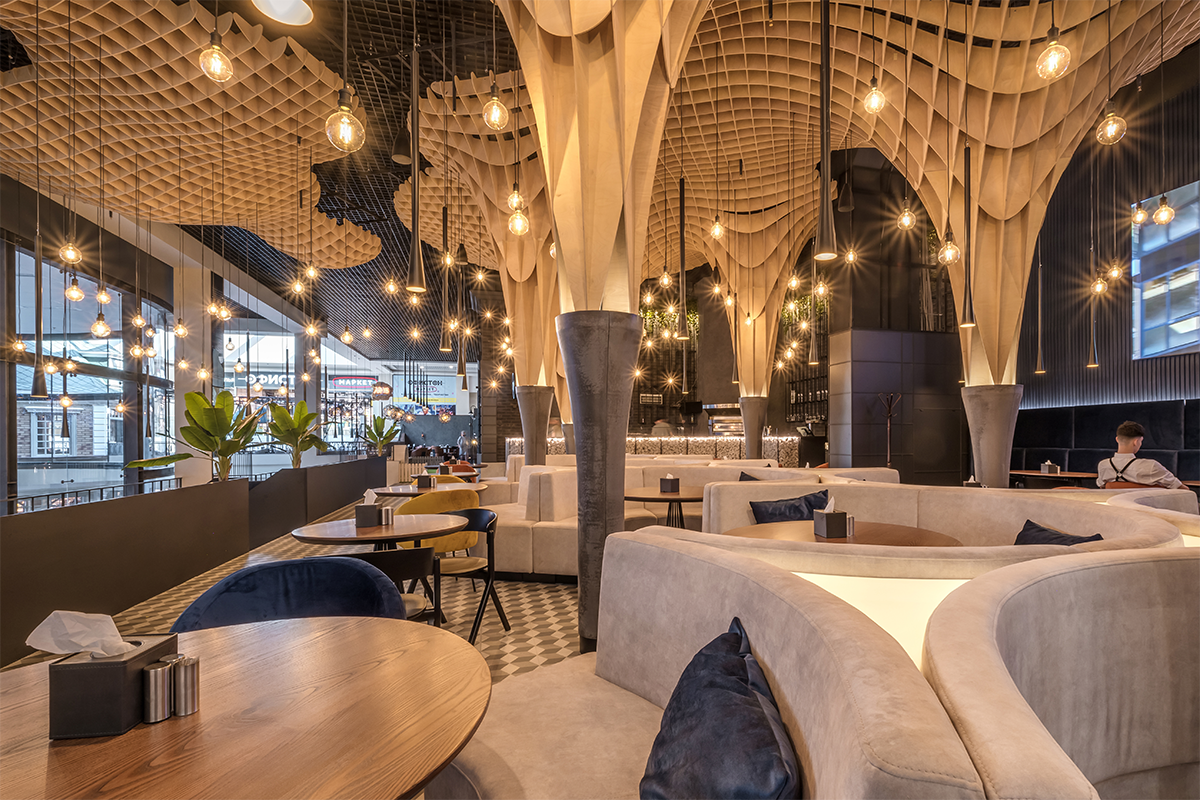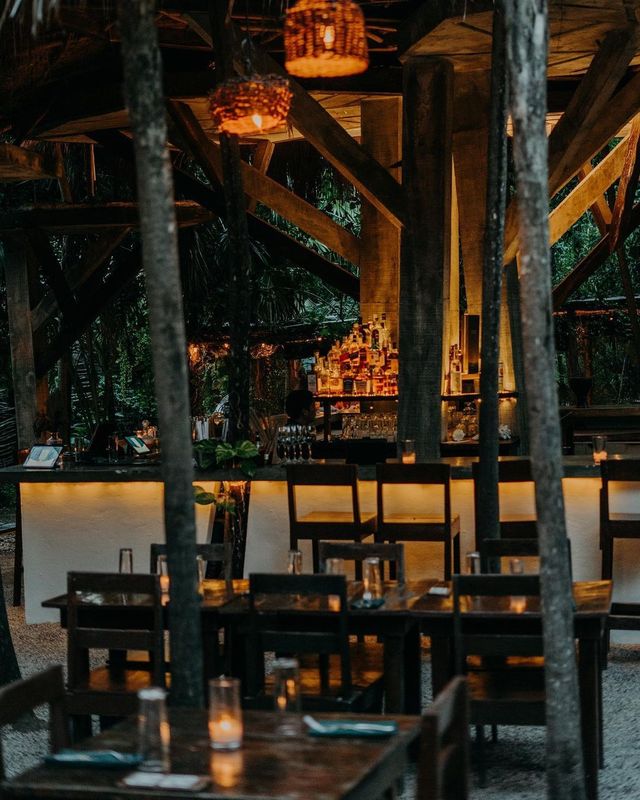Savor Authentic Eastern Cuisine With a Pan-Asian Twist for a Culinary Experience
Beginning on a cooking trip via genuine Oriental food, enhanced with a Pan-Asian twist, provides a distinct chance to check out the rich tapestry of flavors that specify the area's varied culinary traditions. As you contemplate these tempting recipes, take into consideration the cultural narratives and historic influences that shape them, each bite supplying a story waiting to be found. pan asian dining Islamabad.

Checking Out Pan-Asian Flavors
In the realm of international gastronomy, Pan-Asian food stands out for its exceptional diversity and the unified interplay of tastes from various Eastern cultures. This cooking strategy commemorates the unique ingredients and rich customs found throughout the continent, developing a tapestry of preferences that is both fascinating and satisfying. Key to Pan-Asian food is its ability to stabilize different flavors-- sweet, salted, spicy, and sour-- while highlighting the freshness and top quality of each component.
From the umami-rich soy sauce of Japan to the intense chili peppers of Thailand, Pan-Asian food supplies a considerable palette of tastes. These elements are commonly incorporated in creative ways, enhancing dishes with layers of intricacy. For circumstances, making use of fragrant herbs such as lemongrass and cilantro, typical in Vietnamese and Thai food, includes a rejuvenating illumination to recipes, while the incorporation of coconut milk delivers a luscious, rich structure.
The emphasis on fresh produce and fragrant seasonings ensures that each meal is not only a feast for the palate yet also for the senses. Pan-Asian cuisine invites diners to start a culinary journey, discovering the vast and differed landscapes of Eastern gastronomy with every bite.
Combination Recipes to Attempt
While Pan-Asian cuisine is celebrated for its traditional tastes, the contemporary cooking landscape is progressively embracing blend meals that mix these classic components with influences from various other regions. This innovative strategy not only honors the abundant heritage of Asian cookeries but also presents unique taste experiences that attract modern tastes.
An archetype of such a blend dish is the Korean-Mexican taco, where seasoned bulgogi beef is wrapped in a warm tortilla, covered with kimchi and a spicy gochujang-infused salsa. This mix marries the strong, tasty tastes of Korea with the dynamic, fresh components of Mexican cuisine. Likewise, sushi burritos have actually gotten popularity, integrating the fragile artistry of Japanese sushi with the hearty, hand-held convenience of a burrito, typically featuring fusion active ingredients like tempura shrimp and avocado with a drizzle of wasabi mayo.
One more notable recipe is Thai curry ramen, which infuses the creamy, aromatic seasonings of Thai curry right into the soothing broth of standard Japanese ramen, producing an unified mix that tantalizes the detects. These blend recipes extend beyond plain uniqueness; they stand for a cooking dialogue between cultures, encouraging exploration and innovation in the globe of Pan-Asian food.
Crucial Ingredients and Flavors
To genuinely appreciate Pan-Asian cuisine, one have to recognize the crucial active ingredients and flavors that create its structure. This varied culinary design attracts from an abundant tapestry of Eastern customs, employing a harmonious blend of tastes and textures.
Aromatic components are essential, with garlic, lemongrass, and ginger being ubiquitous across various Pan-Asian dishes. These components provide a great smelling base that boosts the complexity of tastes. Spices such as star anise, cardamom, and cinnamon present warmth and personality, echoing impacts from areas like China and India.

Food Preparation Strategies and Tips
Mastering the art of Pan-Asian food requires knowledge with its unique food preparation techniques, each contributing to the dynamic tapestry of flavors this culinary practice is celebrated for. Central to these methods is the stir-fry, a quick cooking method that maintains the nutritional stability and vivid colors of components. Utilizing a wok, the stir-fry approach enables even heat distribution, crucial for attaining the particular go to this website structure and taste equilibrium of Pan-Asian dishes.
Another fundamental technique is steaming, especially common in Chinese cuisine. This gentle method maintains the all-natural tastes and nutrients of active ingredients, making it excellent for fish and shellfish and veggies. Dumplings, a precious staple, often gain from steaming, resulting in soft, delicious structures.
Cooking, additionally important, gives great smoky midsts to meals such as Korean bulgogi or Japanese yakitori (Fine dining experience Islamabad). This strategy commonly entails marinading components, allowing tastes to permeate deeply before food preparation over an open fire or warmer
Lastly, mastering the art of stabilizing tastes-- sweet, sour, salted, bitter, and umami-- is vital. Appropriately layering these aspects can elevate a meal from regular to remarkable, offering a complicated and satisfying cooking experience that embodies the essence of Pan-Asian food.
Dining Experiences Worldwide
Around the world, Pan-Asian cuisine provides an exceptional dining experience, commemorated for its abundant tapestry of flavors and vivid discussions. This culinary phenomenon has gone beyond cultural limits, capturing the hearts and tastes buds of food enthusiasts worldwide. In worldwide cities like New York, London, and Sydney, Pan-Asian dining establishments serve as melting pots where culinary customs from Thailand, Japan, China, and beyond assemble, providing restaurants with an eclectic mix of meals that highlight the area's diversity.
The global charm of Pan-Asian cuisine depends on its capability to provide both credibility and technology. Chefs masterfully wed typical ingredients view such as lemongrass, soy sauce, and miso with contemporary strategies, causing recipes that are both refreshingly brand-new and acquainted. This blend permits restaurants to get started on a culinary journey that appreciates heritage while accepting modernity.
In addition, eating experiences are raised with thoughtfully developed atmospheres that show the principles of Pan-Asian looks. From minimal Japanese-inspired insides to lively Thai-themed rooms, each restaurant uses a special atmosphere that complements the cooking offerings. Because of this, customers are not merely eating a dish yet partaking in a cultural experience, making Pan-Asian dining a really global phenomenon.
Conclusion
The expedition of Pan-Asian cuisine supplies a profound understanding of the intricate interaction of tastes and culinary traditions across Asia. By welcoming blend meals such as Thai curry ramen and sushi burritos, the culinary trip not only highlights the adaptability of traditional active ingredients but likewise showcases innovative modern-day methods. This gastronomic adventure, enriched by cooking methods and crucial spices, gives an one-of-a-kind chance to appreciate the multiculturalism and culinary virtuosity that define Pan-Asian food on a global range.
Beginning on a culinary trip through authentic Eastern food, enhanced with a Pan-Asian spin, provides an one-of-a-kind opportunity to check out the abundant tapestry of flavors that specify the area's diverse culinary practices.In the realm of international gastronomy, Pan-Asian food stands out for its amazing variety and the unified interplay of tastes from different Eastern cultures. Secret to Pan-Asian food is its ability to stabilize contrasting tastes-- pleasant, salty, spicy, and sour-- while highlighting the quality and quality of each active ingredient.
